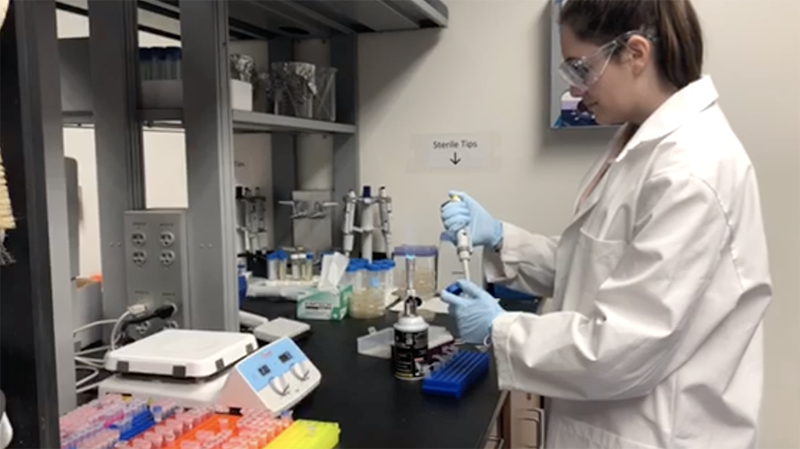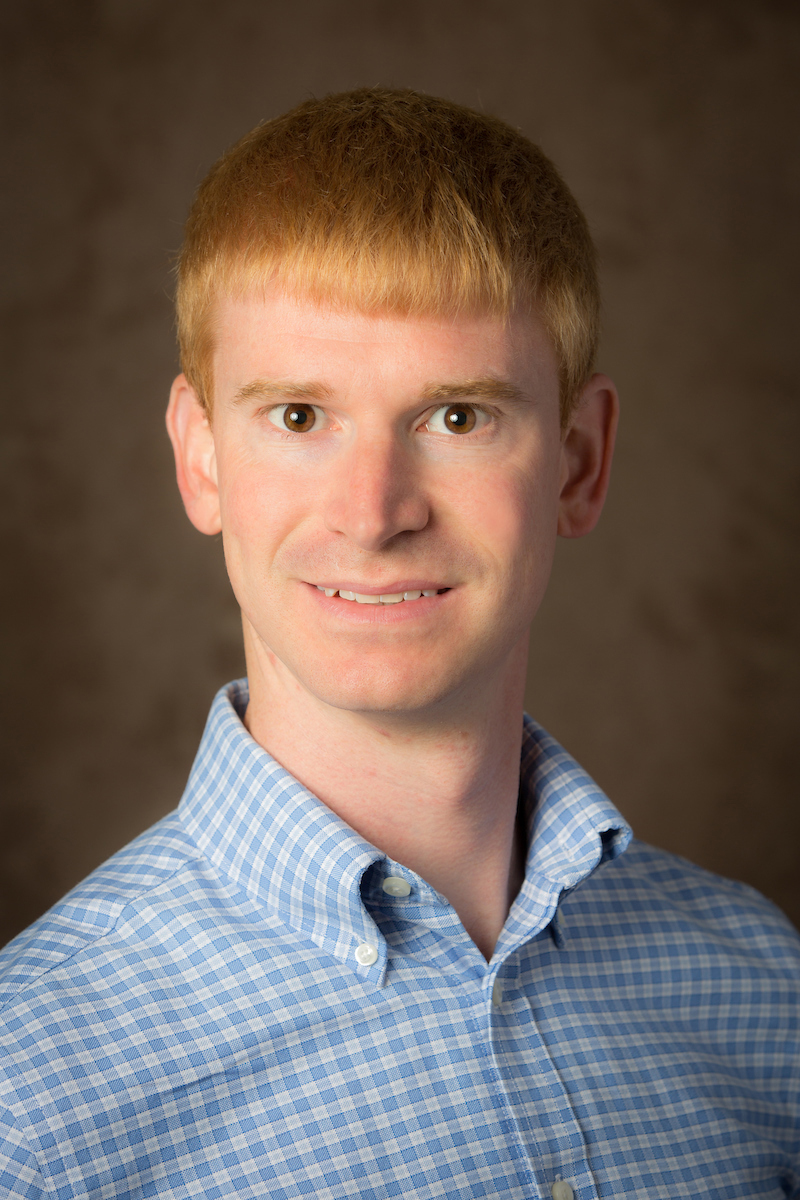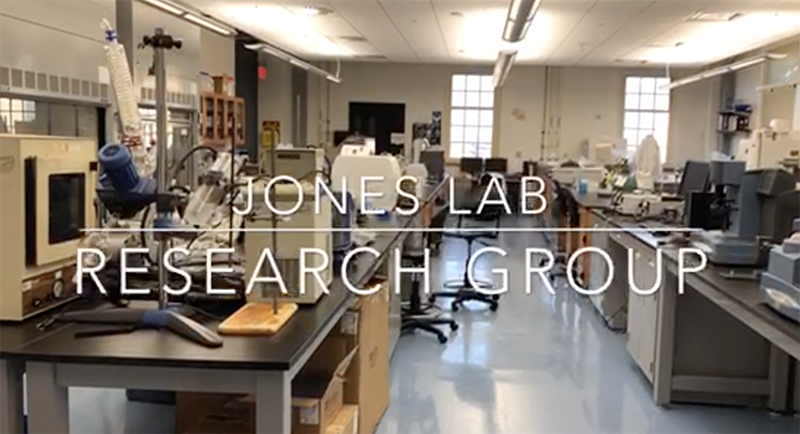

Miami researchers discover process to sustainably produce psilocybin - a drug candidate that could help treat depression
A team of undergraduate students author published article

Junior Alexandra (Lexie) Adams is the lead author in a published article of their findings in a scientific journal.
By Carole Johnson, university news and communications
Andrew Jones at Miami University and his team of students may have developed
Through metabolic engineering, they discovered a way to sustainably produce a promising drug candidate to help patients with treatment-resistant depression.
Their findings are published in the journal Metabolic Engineering titled, “In vivo production of psilocybin in E. coli.”
Psilocybin is now in clinical trials, and medical professionals see promising results for its use in treating addiction, depression and post-traumatic stress disorder in humans.
Jones, assistant professor in Miami’s department of chemical, paper, and biomedical engineering, believed he could come up with a process using genetically engineered bacteria to produce the drug candidate.
The chemical, psilocybin, is naturally found in a specific mushroom, Psilocybe
Andrew Jones' idea sparked a research path where he guided students as they conducted experiments.
Finding an optimal organic host
Through metabolic engineering, which finds ways to increase a cell’s ability to produce a compound of interest, his team of students developed a series of experiments to identify optimal psilocybin production conditions. The recently published article describes their work to optimize the production of psilocybin in the Escherichia coli bacteria. The team is using a well-known E. coli strain that is engineered for safe lab production.
“We are taking the DNA from the mushroom that encodes its ability to make this product and putting it in E. coli,” he said. “It’s similar to the way you make beer, through a fermentation process. We are effectively taking the technology that allows for scale and speed of production and applying it to our psilocybin producing E. coli.”
Their end result is a significant step toward demonstrating the feasibility of producing this drug economically from a biological source.
“What’s exciting is the speed at which we were able to achieve our high production. Over the course of this study we improved production from only a few milligrams per liter to over a gram per liter, a
He gives much credit and praise to his students who designed many of the experiments performed during the 18-month-long study.
“A big part of my job is training undergraduates to do this work. The basic idea was mine, but much of the experimental design fell on the students. Early on, I would help guide them in the experimental design process. Toward the end, they were becoming more independent. That’s the type of student we want as they near graduation,” Jones said.
Undergraduate students help mentor other students on the basics of working in a scientific laboratory.
Learning to run laboratory experiments
Lead author Alexandra (Lexie) Adams, a junior chemical engineering major, became a member of the research team her freshman year, just as the Jones Lab was getting started. Patient and meticulous, Jones worked with the admittedly nervous Adams on the
The initial work was done in the summer of 2018 as Adams and another undergraduate student co-author, Nicholas Kaplan, took part in Miami’s Undergraduate Summer Scholars Program. The program provides funding to students for undergraduate research.
Both students, working on separate studies, learned the ins and outs of research, gaining confidence and learning lessons as the summer progressed.
Kaplan, a junior chemical engineering major, studied the feasibility of cyanobacteria as another potential metabolic engineering host. His findings showed mixed results, and it was decided that the lab team would focus on Adams’ psilocybin in E. coli project.
Celebrating a research breakthrough
Adams remembers when they saw the breakthrough in their research. Their goal was to transfer the DNA from the mushroom and see activity in the E. coli host.
“Once we transferred the DNA, we saw [a tiny] peak emerge in our data. We knew we had done something huge,” she said.
Other members of the team included: graduate Zhangyue ‘Tom’ Wei (Miami ’19), graduate John ‘Jack’ Brinton (BS Miami ’17, MS Miami ’19), junior Chantal Monnier, senior Alexis Enacopol, and staff member Theresa
Both Adams and Kaplan continue to work with Jones. The students are leading projects that build on the recent success of the psilocybin work. Each of them is starting to pass down what they have learned in the lab by mentoring new undergraduate students that join the Jones Lab.
“It’s important for [the new students] to understand the big picture so they see the reasons for the different steps of the experiments,” Kaplan said.
Jones is pursuing the next phase of this research by studying ways to make the E. coli bacteria a better host — the next step toward enabling sustainable production at levels required by the pharmaceutical industry.


